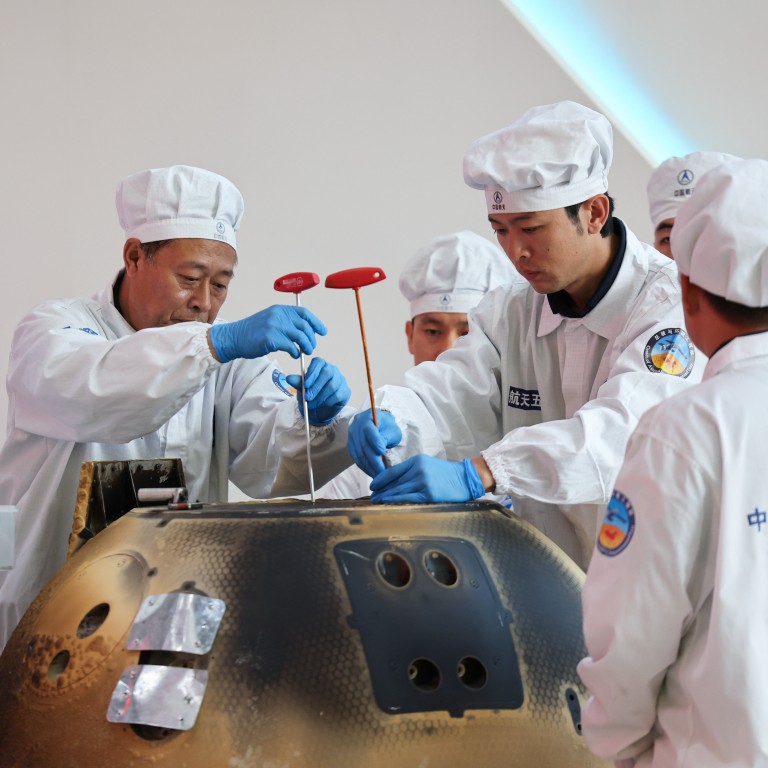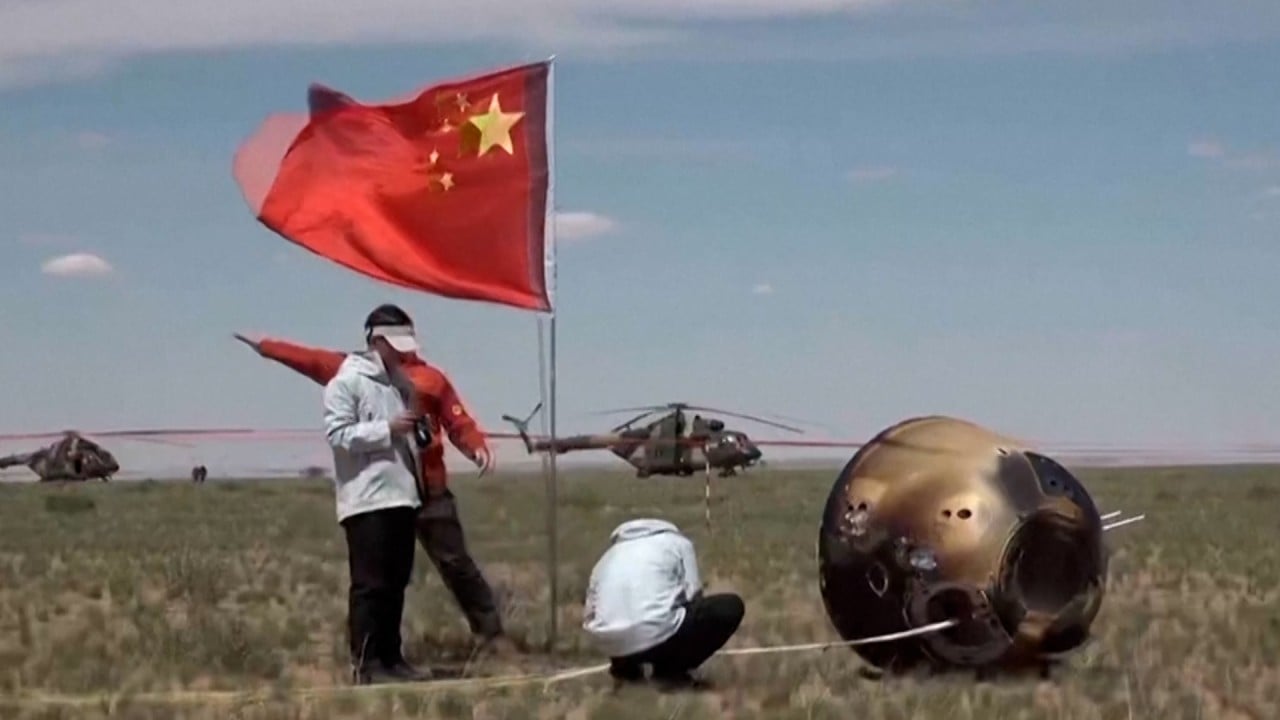
China’s Chang’e-6 lunar probe brought back 1.9kg of rock samples, space agency says
- The samples, collected from the unexplored far side of the moon, were handed over to the Chinese Academy of Sciences on Friday
“According to preliminary calculations, the Chang’e-6 mission collected 1,935.3 grams [4.26lb] of lunar samples,” the China National Space Administration (CNSA) said in a statement.
The samples were collected from the far side of the moon – the first time this has been done – at an impact crater known as the South Pole-Aitken Basin, which always faces away from Earth.
“After the samples are safely transported to the lunar sample laboratory, the researchers of the ground application system will carry out the storage and processing of the lunar samples as planned, and start scientific research,” the CNSA said.
“Our container is designed to be only so large, so we can’t add any more,” Hu said.
The Chang’e-5 spacecraft brought back about 1.73kg (3.8lb) of lunar soil from the near side of the moon when it returned from its mission in 2020.
The space agency said the samples had “unique scientific significance” and were an “important asset for all mankind”. Studying them could improve “understanding of the evolution of the moon, accelerate mankind’s peaceful exploration and utilisation of lunar resources”.
Li Chunlai, deputy chief designer of the mission, told reporters on Thursday that the samples “may have very different mineral chemical compositions” from those collected from the moon’s near side.
“In other words, we only know about half of the moon from the samples collected in the past,” he said.
That includes samples collected by the Chang’e-5 mission. Li said more than 100 “high-quality” papers had already been published in journals like Nature and Science in less than four years of researching those samples.
One major finding was that volcanic activity on the moon dates back to around 2 billion years ago – extending previous estimates from the Apollo missions by nearly 1 billion years.
Liu Yunfeng, head of international cooperation at the CNSA, said China had launched an international review of research on the Chang’e-5 samples and would make the results available in the future.


